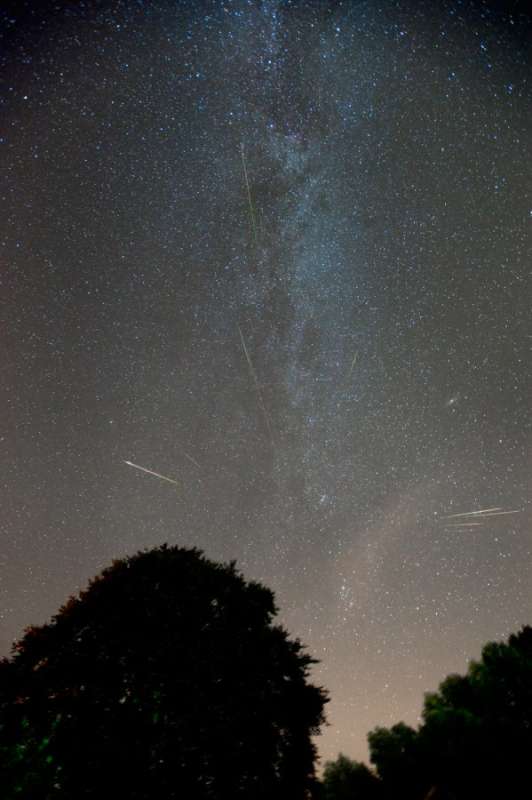
|
Credit & Copyright: Marco Verstraaten
Explanation:
On the night
of August 12, from moonset until dawn was
a good time to see meteors.
Enthusiasts watched
as comet dust rained on planet Earth,
streaking through dark
skies during the annual
Perseid Meteor Shower.
Anticipating the shower
approaching its peak,
astronomer Marco Verstraaten recorded a series of exposures capturing
meteors over a period of 6 hours using a wide angle lens
from a not-so-dark site in the Netherlands.
Combining them still produced this dramatic night sky view with
many colorful meteor streaks.
The starry backdrop includes the Milky Way and
even the faint Andromeda Galaxy, right of center.
Although the comet dust particles are traveling parallel to each
other, the shower meteors clearly seem to radiate from a spot
on the sky in the
eponymous
constellation Perseus.
The radiant effect is due to
perspective,
as the parallel tracks appear to converge at a distance.
Bright stars in Perseus extend into the gap between the
foreground trees.
|
January February March April May June July August September October November December |
| |||||||||||||||||||||||||||||||||||||||||||||||||||||||
NASA Web Site Statements, Warnings, and Disclaimers
NASA Official: Jay Norris. Specific rights apply.
A service of: LHEA at NASA / GSFC
& Michigan Tech. U.
Based on Astronomy Picture
Of the Day
Publications with keywords: meteor - Perseids
Publications with words: meteor - Perseids
See also:
- APOD: 2025 August 25 Á The Meteor and the Star Cluster
- APOD: 2025 August 21 Á Mostly Perseids
- APOD: 2025 August 20 Á Perseid Meteors from Durdle Door
- APOD: 2025 August 12 Á Perseids from Perseus
- APOD: 2025 August 6 Á Meteor before Galaxy
- APOD: 2025 August 3 Á Milky Way and Exploding Meteor
- APOD: 2024 November 27 Á The Meteor and the Comet
